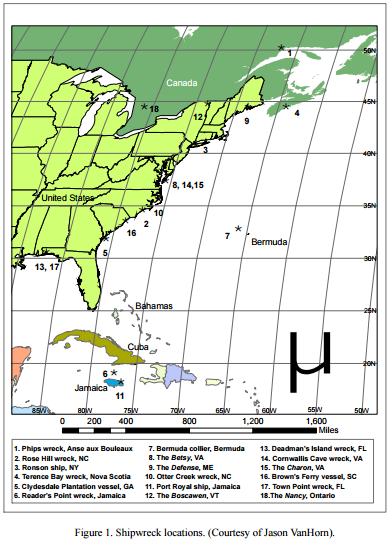Written by the TreasureGuide for the exclusive use of treasurebeachesreport.blogspot.com.
First a couple reports. Jonah M. said, Beaches didn't look that bad around turtle trail lots of sand moved off and ended making a sand bar in the water. The bags were showing from looking down the beach. Lots of pieces of small lead sheeting a couple musket balls and some great square bronze spikes. I didn't get to hunt it but wish I had. I wouldn't be real surprised if a couple cob popped out. I know it was cold.
Thanks for the report Jonah. I didn't get up that way to take a look.
From up in the Cocoa area, Dan C., who hunts mostly modern jewelry, sent this report.
I have been hunting Cocoa Beach quite a bit lately, mostly high tide mark down to low tide area in the wash. No luck lately, same haul of clad coins and there are bottlecaps and pennies everywhere as usual for this trashy beach.
The surf has been too rough for in-water detecting, so I am confined to the beach.
I was extremely disappointed in this last cold front which, instead of giving us a nice beach cut, piled up tons of sand instead. I attribute this to the high surf combined with not enough NE winds. The only difference today was that the clad pennies were mostly encrusted, so, yes the pennies washed up, but not the gold.
The gold has apparently moved even deeper, and there is another foot of sand or more along the high tide mark where the cut should be.
Thanks for the report Dan.
There are times when I can't get out to check the beaches as much as I would like. Reports from other people help. I suspected that the Vero area might have improved, but didn't get a chance to look for myself. I appreciate receiving reports from various beaches.
You might think that you learned about a beach a day or two too late. Even when that might be true, it still helps to know what beaches are doing at different times. If you know which ones were cut recently, even if you didn't get there in time, that information will help you get some idea of what will happen next, especially when the wind and waves are similar.
---
Here is an great study of 18th century merchant ships. The title is EIGHTEENTH-CENTURY COLONIAL AMERICAN MERCHANT SHIP CONSTRUCTION. It is a thesis by Kellie Michelle VanHorn. There is really a lot of very useful information in this thesis. It provides archaeological notes on a lot of wrecks along the East Coast of the US, as well as some from other areas. Notes on type o wood and fasteners is included. Always check the reference list at the end of studies like this.
Here is a map of the wrecks included in the study.
 |
| Source: Thesis by Kellie VanHorn. See link below. |
And below are a couple excerpts to give you some idea of the types of things you can find in this study.
In the archaeological examples, the 100-ton merchant vessels all had inner and outer planking of about 2 in (5.1 cm), as did Boscawen. The 100-ton Deadman’s Island wreck had thinner planking for its size; at 1.5 in (3.8 cm), this planking was closer to the dimensions used on the much smaller river traders, making it unusual for a naval vessel. This thin planking, along with the relatively small scantlings of the keelson and frames, would have made the vessel lighter and faster. The 260-ton Ronson ship also had light planking for its size, measuring only 2 in (5.1 cm), the same as vessels less than half its tonnage. As in the Deadman’s Island wreck, this smaller dimension matched the ship’s lighter scantlings for other timbers. Even the merchant vessels with the thickest planking, the two colliers, still had thinner strakes than what Murray recommended for their size. Thick planking would have benefited the colliers in supporting the heavy cargoes they were designed to carry. The ceiling planking was the same thickness as the external planking in most of the shipwrecks, except for the Phips wreck, Rose Hill vessel, and the Nancy, where it was thinner.
Copper sheathing did not become common on merchant vessels until the nineteenth century, so it is not surprising to find only wood sheathing on these vessels. Lead strips or patches were found in association with the Ronson ship, the Otter Creek wreck, and the Deadman’s Island vessel; these lead pieces were probably used as patches to cover leaks or damaged areas. Remains of copper sheathing were found on Charon, including the sides of the keel and the garboard strakes; this warship was one of the first to be coppered. Concretions found near the Cornwallis Cave wreck suggest it may have been sheathed with copper in addition to wood.
Here is the link if you want to take a look at the thesis.
http://nautarch.tamu.edu/pdf-files/VanHorn-MA2004.pdf
If you are trying to learn to identify shipwreck finds, this study will help.
---
Wednesday the high and low tides are supposed to be big. Later this week we are supposed to have a couple days of 5 - 8 foot surf.
Happy hunting,
TreasureGuide@comcast.net